Text
Cell Disruption Techniques: Sonication vs. Homogenization

In the realm of cellular biology and biotechnology, the efficient disruption of cell membranes is a crucial step. Researchers and scientists leverage various methods to break down cell structures, releasing intracellular components for further analysis and extraction. Two widely employed techniques for cell disruption are sonication and homogenization, each presenting its unique set of advantages and considerations. In this comprehensive guide, we explore these methodologies to unravel the intricacies of cell disruption.
Samples for protein and nucleic acid analysis must be prepared in two steps: tissue disruption to liberate individual cells and lysis of those cells to release their cellular contents. Mechanical homogenization and sonication (also known as ultrasonic homogenization) are two common methods used in these procedures.
Choosing the best approach for your specific application requires significant consideration. Each has advantages and disadvantages, and laboratories frequently utilize these techniques in conjunction with one another. Continue reading to learn how to choose a procedure that will not harm valuable or irreplaceable tissue samples.
Sonication: Probing Cells, Enhancing Cell Disruption
Sonication involves the use of high-frequency sound waves to disrupt cell membranes. The process generates intense pressure waves that create microscopic bubbles in the cell suspension. As these bubbles collapse, they produce shock waves, leading to the mechanical disruption of cell structures.

Benefits of Sonication:
Precision and Control: Sonication offers precise control over the disruption process, allowing researchers to tailor the intensity and duration of sonication.
Time Efficiency: Sonication is often a quick process, making it suitable for laboratories where time is of the essence.
Scalability: It can be easily scaled for small to large volumes of cell suspension.
Considerations:
Heat Generation: Intense sonication can lead to a rise in temperature, which might adversely affect sensitive biomolecules.
Equipment Costs: High-quality sonication equipment can be relatively expensive.
Homogenization: The Mechanical Force Approach
Homogenization, on the other hand, relies on mechanical force to disrupt cells. In this process, cells are forced through a narrow space or punctured using mechanical blades, resulting in the breaking of cell walls.
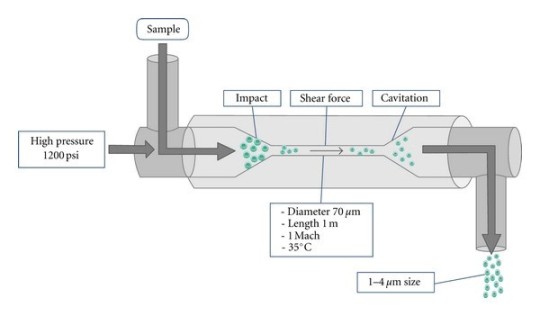
Benefits of Homogenization:
Versatility: Homogenization can handle various sample types, from soft tissues to tough plant materials.
Cost-Effectiveness: Homogenization equipment is generally more cost-effective compared to high-end sonication devices.
Less Heat Generation: Homogenization tends to generate less heat, making it suitable for heat-sensitive samples.
Considerations:
Less Precision: Achieving precise control over the disruption process might be challenging in homogenization, especially for smaller volumes.
Sample Heating: While generally less than sonication, homogenization can still cause a moderate increase in sample temperature.
Choosing the Right Method
The choice between sonication and homogenization depends on various factors, including the sample type, required cell disruption level, and the downstream applications.
For DNA and RNA extraction, where preserving molecular integrity is crucial, sonication might be the preferred choice.
When dealing with larger volumes or more robust samples, homogenization could be the pragmatic approach.
Conclusion
In the dynamic landscape of cellular research, the choice between sonication and homogenization is akin to selecting the right tool for a delicate task. Understanding the nuances of each technique empowers researchers to make informed decisions, ensuring optimal results in cell disruption.
As technology advances, researchers continue to refine and innovate these techniques, pushing the boundaries of what’s achievable in the realm of cell disruption. The journey from intact cells to liberated cellular components is a fascinating exploration that unfolds at the crossroads of biology and technology.
This blog aims to serve as a comprehensive guide, shedding light on the principles, benefits, and considerations associated with sonication and homogenization. With a thorough understanding of these techniques, researchers can navigate the complexities of cellular biology with precision and efficiency.
0 notes
Text
3-part hematology analyzer v/s 5-part hematology analyzer

In the realm of hematology, the choice between a 3-part and a 5-part Hematology Analyzer plays a pivotal role in diagnosing and managing a myriad of blood-related disorders. This article aims to dissect the nuances of these sophisticated diagnostic tools, shedding light on their differences, applications, and the impact they have on clinical decision-making.

Hematology Analyzer Overview
Hematology analyzer are instrumental in providing a comprehensive assessment of blood components, aiding in the diagnosis and monitoring of various medical conditions. They automate the process of counting and characterizing blood cells, offering invaluable insights to healthcare professionals.

3-part Hematology Analyzer
Components Analyzed
The 3-Part analyzer give 3-Part differential count of WBC/TLC. Neutrophils, Lymphocytes and it report rest other differential counts as others.It does report Hb, TLC, Platelets, and RBC etc.
Applications
Routine blood counts
Screening for basic hematological disorders
Cost-effective and efficient for high-throughput laboratories
Advantages
Faster results
Economical
Suitable for routine clinical use
Limitations
Limited information on cell morphology
Less detailed differentiation of white blood cell types
5-part Hematology Analyzer
Components Analyzed
The 5 part reports 5 differential components of WBC/TLC. Namely Neutrophils, Lymphocytes, Eosinophils, Basophils and Monocytes. It does report HB, TLC, RBC, platelets etc.
Applications
Comprehensive hematological profiling
Precise differentiation of white blood cell subtypes
Ideal for diagnosing complex hematological disorders
Advantages
Enhanced specificity and sensitivity
Detailed morphological information
Accurate diagnosis of diverse blood-related conditions
Limitations
Higher cost
Longer analysis time compared to 3-part analyzers

Clinical Requirements
The clinical context and specific diagnostic needs of the laboratory play a pivotal role in choosing between a 3-part and 5-part Analyzer.
Workload and Throughput
Laboratories with high sample volumes may opt for the efficiency of 3-part Analyzer, while those requiring detailed information on blood cell subtypes may favor the precision of 5-part Analyzer.
Budget Considerations
The financial aspect is a significant determinant, with 3-part Analyzer offering a cost-effective solution for routine analyses, while 5-part Analyzer involve a higher initial investment.
Striking the Hematological Balance
As laboratories navigate the choice between 3-part and 5-part Hematology Analyzer, it’s essential to strike a balance between diagnostic accuracy, efficiency, and economic considerations. The selection of these analyzers is not just a technical decision but a strategic one, influencing the quality of patient care and the efficiency of laboratory operations. By understanding the nuances of these analyzers, healthcare professionals can tailor their choices to align with the specific demands of their practice.
0 notes
Text
How to Choose Right Medical Gloves

In the world of healthcare, the gloves that doctors and nurses wear are like silent superheroes, protecting both the healthcare warriors and their patients. Ever wondered about the considerations behind choosing these vital protectors? But have you ever wondered how these gloves are chosen? Let’s break it down in simple terms, considering what’s important when picking the right medical gloves.
Material Matters

Think of gloves as hand attire. Just as you choose the right fabric for comfort, in the medical world, the material of the gloves is crucial. Latex gloves are akin to cotton—comfortable but not suitable for everyone. Nitrile gloves, like a cool synthetic blend, offer protection without triggering allergies.
The Right Fit
The importance of the right fit when it comes to right medical gloves cannot be overstated. A right medical gloves that fits perfectly acts as a second skin, also reducing the risk of accidental exposure to contaminants. The right fit minimizes the chances of tears or punctures, providing an added layer of protection for both the healthcare professional and the patient.
Thickness Counts

Consider glove thickness as choosing between a thin T-shirt and a thick sweater. Thicker gloves provide enhanced protection against microscopic invaders and sharp objects. For delicate tasks, like handling intricate jewelry, thinner gloves offer a better sense of touch.
To Powder or Not to Powder
Imagine powdered gloves as those with a touch of talcum powder. While seemingly pleasant, powdered gloves can lead to allergies and respiratory issues. Opting for powder-free is akin to selecting a fragrance-free lotion—safer for everyone involved.
Standards and Certifications
Think of this as choosing products with an ISI mark. Seek certifications from organizations like the FDA; they guarantee that the gloves meet stringent quality and safety standards—a reassurance of quality.
Single-Use or Reusable

In the dynamic landscape of healthcare, the choice between single-use and reusable gloves is a decision that hinges on practicality, hygiene, and cost-effectiveness. Much like the distinction between using disposable paper plates and dinner plates, the considerations for opting for one over the other depend on the specific needs of the task at hand.
Right Medical Gloves for Specialized Tasks
In the intricate tapestry of healthcare, there are moments when standard protection is not enough. Specialized tasks, ranging from delicate surgeries to handling hazardous materials, require a tailored approach to hand protection. This is where the significance of special gloves comes into play – a concept akin to having different tools for distinct jobs. These specialized gloves serve as a crucial line of defense, ensuring that healthcare professionals can execute their tasks safely and effectively.
Allergies and Sensitivity
In the diverse landscape of healthcare, where patient well-being is paramount, the consideration of allergies and sensitivity in right medical gloves takes center stage. Much like individuals with sensitive skin meticulously choose skincare products, healthcare professionals pay careful attention to the allergen information on right medical gloves to safeguard their hands and the well-being of those under their care.
Budget-Friendly Choices

While everyone desires top-notch quality, budget considerations are essential. Think of it as shopping wisely—look for right medical gloves that strike a balance between quality and cost, providing robust protection without draining your wallet.
Real People’s Reviews
Lastly, akin to reading reviews before purchasing gadgets, it’s valuable to know what others say about the right medical gloves. Insights from healthcare professionals’ real experiences offer a glimpse into how well the gloves perform in the actual healthcare environment.
Conclusion
This serves as a straightforward guide to choosing the right medical gloves. Remember, these gloves aren’t just rubber or nitrile pieces; they function as shields, ensuring the safety of our healthcare heroes as they care for us. Making informed choices guarantees these silent superheroes carry out their duties effectively, contributing to the well-being of all. Stay safe, stay healthy.
0 notes
Text
Advance Healthcare: EXC-200 Automated Biochemistry Analyzer’s Pioneering Technology

In recent times, the healthcare sector in India has witnessed remarkable advancements, and standing out prominently in this arena is the EXC-200 Automated Biochemistry Analyzer. This state-of-the-art technology is reshaping the diagnostic landscape, providing unprecedented precision and efficiency.
Why Choose the EXC-200 Automated Biochemistry Analyzer
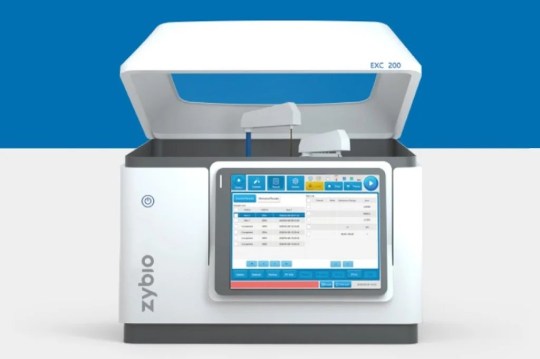
In the ever-progressing realm of medical diagnostics, the EXC-200 Automated Biochemistry Analyzer shines as an optimal selection for healthcare professionals and laboratory facilities. Here are additional compelling reasons to choose the EXC-200 for your biochemical analysis needs.
Key Features and Benefits
Precision for Accurate Diagnosis
The EXC-200 Automated Biochemistry Analyzer is meticulously crafted to deliver precise and reliable results. Its advanced technology ensures accurate measurements of various biochemical parameters, empowering healthcare professionals with essential data for accurate diagnosis and treatment planning.
Automation for Enhanced Efficiency
A standout feature of the EXC-200 is its advanced automation capabilities. The analyzer streamlines the diagnostic process, reducing the time required for sample analysis. This not only enhances the efficiency of healthcare facilities but also enables quicker decision-making in critical situations, a crucial aspect in the context of India’s healthcare challenges.
User-Friendly Interface
With simplicity in mind, the EXC-200’s user interface is designed to be easily navigable. Healthcare professionals, regardless of their technical expertise, can efficiently utilize the technology. This user-friendly approach enhances accessibility, ensuring that the benefits of advanced diagnostics are widespread and inclusive.
Remote Monitoring and Connectivity
In an era where connectivity is crucial, the EXC-200 Automated Biochemistry Analyzer goes a step further by offering remote monitoring capabilities. This feature allows healthcare providers in India to access real-time data and results from anywhere, fostering collaboration and facilitating timely interventions, particularly in regions with limited healthcare infrastructure.
Cost-Efficiency and Resource Optimization
The efficiency brought about by the EXC-200 doesn’t just translate to quick results. Its automation and comprehensive testing capabilities contribute to cost savings for healthcare facilities. With optimized resource utilization, institutions can allocate their budget more effectively, providing better services to patients, a significant consideration in resource-constrained settings.
Future-Ready Technology for Advancing Healthcare

As India’s healthcare landscape evolves, the EXC-200 Automated Biochemistry Analyzer remains at the forefront of innovation. Regular updates and continuous technological advancements ensure that Indian medical laboratories are equipped with the latest tools to address emerging healthcare challenges and elevate the standard of diagnostics.
Advantages
Integrated design combined operation system with analyzer spares more space for small labs, clinics, etc.
Colorful touch screen and intuitive navigation menu offer a user-friendly experience.
Reaction volume minimum of 90μL and reduced water usage lead to cost-effectiveness.
Bilateral LIS interface allows convenient results transfer.
Quality controls and more than 100 original reagents guarantee dependable and verifiable findings.
Conclusion
The EXC-200 Automated Biochemistry Analyzer is not just a piece of equipment; it’s a transformative force in healthcare diagnostics. Its pioneering technology sets a new standard for precision, efficiency, and adaptability. As we look to the future of healthcare, the EXC-200 Automated Biochemistry Analyzer stands as a beacon of innovation, promising improved patient outcomes and a more streamlined approach to diagnostics. Embrace the future with the EXC-200 Automated Biochemistry Analyzer and revolutionize the way healthcare is delivered.
This cutting-edge analyzer integrates pioneering technology to meet the evolving demands of healthcare. Its transformative capabilities promise a future where diagnostics are not only more accurate but also more accessible. Embrace this technological evolution with the EXC-200 Automated Biochemistry Analyzer, as it paves the way for a healthcare experience that is efficient, patient-centric, and marked by unparalleled advancements in diagnostics. Revolutionize the delivery of healthcare by adopting the EXC-200, and embark on a journey towards a future where precision and innovation converge for the betterment of patient care.
0 notes
Text
Role of artificial intelligence in healthcare

In an era marked by technological advancements, the marriage of artificial intelligence (AI) and healthcare has emerged as a transformative force, promising to reshape the landscape of medical practices and patient care. As we stand at the intersection of innovation and well-being, let’s delve into the profound impact of AI on healthcare.
Artificial Intelligence-Enhanced Early Detection in Healthcare
One of the primary contributions of AI in healthcare lies in its ability to analyze vast amounts of medical data swiftly and accurately. Machine learning algorithms, a subset of AI, can sift through patient records, images, and diagnostic reports to identify patterns and anomalies that may elude the human eye. This enables early detection of diseases and enhances diagnostic precision.
For instance, AI-powered imaging analysis has shown remarkable capabilities in detecting subtle signs of diseases such as cancer in medical images like X-rays and MRIs. These technologies not only expedite diagnosis but also contribute to more effective treatment plans.
Personalized Treatment Plans
Artificial Intelligence excels in processing large datasets to generate insights into patient-specific factors, ranging from genetic information to lifestyle choices. This wealth of information allows healthcare providers to tailor treatment plans based on individual characteristics, optimizing outcomes and minimizing side effects.
Additionally, Artificial Intelligence-driven predictive analytics can forecast disease progression and patient response to specific interventions. This personalized approach to healthcare marks a departure from the one-size-fits-all model, ushering in an era where treatments are as unique as the individuals receiving them.
Drug Discovery and Development
The traditional drug discovery process is notoriously lengthy and resource-intensive. Artificial Intelligence is streamlining this journey by accelerating the identification of potential drug candidates. By analyzing biological data, AI algorithms can predict the efficacy and safety of new drugs, significantly reducing the time and cost associated with bringing novel therapies to market.
Moreover, Artificial Intelligence-driven simulations and modeling contribute to a deeper understanding of disease mechanisms, paving the way for more targeted drug development. This not only expedites the discovery process but also increases the likelihood of identifying breakthrough treatments for previously incurable conditions.
Virtual Health Assistants

Artificial Intelligence is making healthcare more accessible and patient-centric through the advent of virtual health assistants. These AI-powered chatbots and virtual assistants offer round-the-clock support, answering medical queries, providing medication reminders, and even offering emotional support. This not only enhances patient engagement but also alleviates the burden on healthcare professionals, allowing them to focus on more complex tasks.
Telemedicine, powered by AI, has become particularly vital in remote and underserved areas, bringing healthcare services to regions where they were previously scarce. The amalgamation of AI and telemedicine has proven invaluable during global health crises, enabling timely and remote medical consultations.
Predictive Analytics for Public Health
AI plays a pivotal role in bolstering public health initiatives through predictive analytics. By analyzing data from various sources, including social media, climate patterns, and historical health records, AI can predict disease outbreaks, identify potential hotspots, and streamline resource allocation.
For instance, during the COVID-19 pandemic, AI algorithms were employed to analyze patterns of virus spread, predict areas with high infection rates, and optimize the distribution of medical supplies. This foresight enhances the preparedness and responsiveness of healthcare systems in the face of emerging health threats.
Enhanced Robotic Surgery

In the realm of surgical interventions, AI has elevated precision and efficiency. Robotic surgery, guided by AI algorithms, allows for unparalleled accuracy, particularly in intricate and delicate procedures. Surgeons can leverage AI assistance for real-time analysis of data, enabling them to make informed decisions during surgery.
This integration of AI with robotics not only enhances surgical outcomes but also contributes to shorter recovery times and reduced postoperative complications. As technology advances, we can expect a broader adoption of AI-driven robotic systems in various surgical disciplines.
Cybersecurity in Healthcare

The digitization of healthcare records and the widespread use of interconnected devices have exposed the industry to cybersecurity threats. AI is stepping in as a formidable ally in safeguarding sensitive patient data. AI-powered cybersecurity systems can detect and thwart potential breaches, ensuring the confidentiality and integrity of patient information.
By constantly analyzing network traffic, AI algorithms can identify unusual patterns indicative of a cyberattack. This proactive approach to cybersecurity is paramount in an era where the protection of patient data is of utmost importance.
Conclusion
The integration of artificial intelligence into healthcare marks a paradigm shift, propelling the industry toward unprecedented heights of efficiency, accuracy, and patient-centric care. As we witness the relentless evolution of AI applications in healthcare, it becomes evident that this synergy has the potential to redefine medical practices, empower healthcare professionals, and enhance the well-being of individuals worldwide.
However, the adoption of AI in healthcare necessitates a careful balance between innovation and ethical considerations. As we embrace the transformative power of AI, it is imperative to prioritize data privacy, maintain transparency, and foster a collaborative approach among healthcare professionals, technologists, and policymakers. The future of healthcare, guided by the prowess of artificial intelligence, holds the promise of a healthier, more connected, and resilient world.
0 notes
Text
A Comprehensive Guide to the Forced Air Incubator
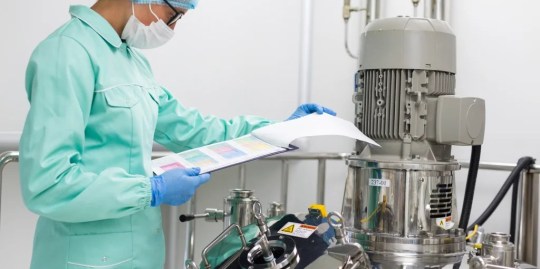
In the dynamic landscape of scientific research, the quest for precision and reproducibility drives the need for controlled environments, and at the heart of many experiments lies the forced air incubator. This indispensable piece of laboratory equipment plays a role in creating optimal conditions for cell culture, microbiology, and various biological experiments. In this comprehensive guide, we will work into the applications, and considerations surrounding the forced air incubator.
Understanding the Forced Air Incubator

A forced air incubator, also known as a mechanical convection incubator, is a sophisticated piece of equipment designed to provide a controlled environment for the growth and maintenance of cells, tissues, and microorganisms. Unlike natural convection incubators that rely on the buoyancy of air for heat distribution, forced air incubators utilize a fan to circulate air evenly, ensuring uniform temperature throughout the chamber.
Key Components of a Forced Air Incubator

Heating Element
Function: The heating element is responsible for raising the temperature within the incubator to the desired setpoint.
Considerations: Quality heating elements ensure accurate and stable temperature control.
Temperature Control System
Function: The temperature control system regulates the heating element based on the user-set temperature.
Considerations: Precision and reliability of the temperature control system are critical for maintaining the desired experimental conditions.
Fan System
Function: The fan system circulates air inside the incubator, preventing temperature stratification and ensuring uniform heat distribution.
Considerations: Efficient fan systems contribute to stable and consistent conditions throughout the incubator.
CO2 Control
Function: In cell culture applications, some forced air incubators are equipped with a CO2 control system to maintain the desired atmospheric conditions for cell growth.
Considerations: For cell culture work, the ability to control CO2 levels is crucial for maintaining physiological conditions.
Humidity Control
Function: Some incubators feature humidity control systems to create a humidified environment for specific applications.
Considerations: Humidity control is essential for experiments where maintaining specific moisture levels is critical.
Applications of Forced Air Incubators
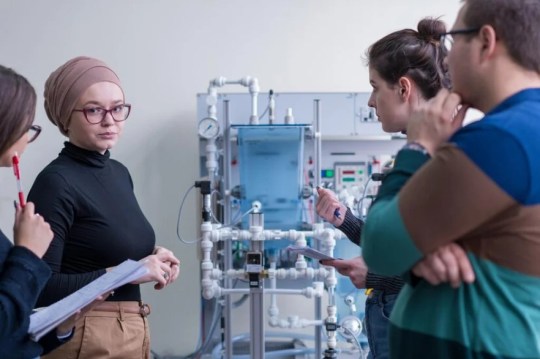
Cell Culture
Significance: Forced air incubators are a cornerstone in cell culture laboratories, providing the controlled environment necessary for the growth and maintenance of mammalian cells.
Considerations: Maintaining stable temperature, CO2 levels, and humidity is essential for successful cell culture experiments.
Microbiology
Significance: In microbiology research, forced air incubators create optimal conditions for the cultivation of bacteria, yeast, and other microorganisms.
Considerations: Precise temperature control is crucial for microbial growth studies and experiments.
Biochemical Assays
Significance: Enzymatic reactions and biochemical assays often require specific temperature conditions, which forced air incubators can provide.
Considerations: Consistent and uniform temperature distribution is vital for reliable assay results.
Plant Growth Studies
Significance: Forced air incubators can be adapted for plant growth studies, providing controlled environments for germination, growth, and experimentation.
Considerations: Adjustable temperature and lighting conditions may be necessary for plant-related experiments.
In vitro Fertilization (IVF)
Significance: In reproductive biology, forced air incubators are utilized for maintaining optimal conditions during the cultivation of embryos in IVF procedures.
Considerations: Precise temperature and humidity control are critical for the success of IVF experiments.
Microscopy Experiments
Significance: Microscopy studies often require a stable and controlled environment to observe live cells or organisms.
Considerations: The forced air incubator provides the necessary conditions for time-lapse microscopy and other live-cell imaging techniques.
Considerations When Using a Forced Air Incubator

Temperature Uniformity
Importance: Ensuring uniform temperature distribution is crucial for reliable and reproducible results.
Considerations: Regularly calibrate the incubator, distribute samples evenly, and avoid overloading to maintain temperature uniformity.
CO2 and Humidity Control (if applicable)
Importance: For cell culture work, maintaining specific CO2 levels and humidity is essential for mimicking physiological conditions.
Considerations: Regularly calibrate and monitor CO2 and humidity sensors, and use appropriate water trays or humidification systems.
Sterilization and Cleaning
Importance: Contamination can compromise experimental results. Regular cleaning and sterilization are crucial.
Considerations: Follow manufacturer guidelines for cleaning, use appropriate disinfectants, and establish a routine maintenance schedule.
Calibration
Importance: Accurate temperature control is contingent on proper calibration of the incubator’s temperature sensors.
Considerations: Regularly calibrate the temperature control system using certified calibration equipment.
Monitoring and Alarming
Importance: Continuous monitoring and alarm systems are essential for promptly addressing deviations from set conditions.
Considerations: Implement a reliable monitoring system, set appropriate temperature and humidity alarms, and respond promptly to any deviations.
Power Supply and Backup
Importance: Ensuring a stable power supply and having a backup system in place is crucial for preventing disruptions to experiments.
Considerations: Use surge protectors, consider a backup power source, and develop contingency plans for power outages.
Latest Innovations and Trends
Smart Incubators
Innovation: Integration of smart technologies for remote monitoring and control.
Impact: Researchers can monitor and adjust incubator conditions remotely, enhancing flexibility and accessibility.
Energy-Efficient Designs
Innovation: Development of energy-efficient forced air incubators.
Impact: Reducing energy consumption contributes to sustainability and cost-effectiveness in laboratory operations.
Improved Sensor Technologies
Innovation: Advancements in sensor technologies for enhanced precision in temperature, CO2, and humidity control.
Impact: Improved sensors contribute to more accurate and stable experimental conditions..
Multi-Chamber Systems
Innovation: Incubators with multiple chambers for parallel experiments.
Impact: Researchers can conduct multiple experiments simultaneously, increasing efficiency and throughput.
Conclusion
The forced air incubator stands as a cornerstone in laboratories worldwide, fostering an environment where scientific breakthroughs flourish. From cell culture to microbiology, its applications are diverse, and its role pivotal in ensuring controlled conditions for delicate experiments. As technology continues to evolve, the forced air incubator adapts, incorporating smart features, energy-efficient designs, and enhanced sensor technologies. In the intricate dance of scientific exploration, the forced air incubator is a silent choreographer, orchestrating the conditions necessary for the growth and discovery that shape our understanding of the natural world.
0 notes
Text
A Deep Dive into Yumizen H1500 Hematology Analyzer

In the ever-evolving landscape of medical diagnostics, breakthrough technologies play a important role in advancing healthcare outcomes. Among these, the Yumizen H1500 stands for innovation, revolutionizing the landscape of clinical analysis. In this comprehensive exploration, we will embark on a deep dive into the Yumizen H1500, unraveling its features, applications, and the transformative impact it brings to the realm of diagnostic analysis.
Introduction to Yumizen H1500
The Yumizen H1500 is a state-of-the-art hematology analyzer designed to meet the demands of modern clinical laboratories. Developed by the esteemed HORIBA Medical, a global leader in the field of in-vitro diagnostics, this analyzer exemplifies precision, efficiency, and versatility. With its advanced technological features, the Yumizen H1500 has become an invaluable tool for healthcare professionals, streamlining the process of hematological analysis.
Key Features and Capabilities
Multidimensional Cell Counting
Significance: The Yumizen H1500 employs multidimensional cell counting, allowing for a comprehensive analysis of various blood parameters.
Impact: This feature provides a detailed insight into the cellular composition of blood, including red blood cells (RBCs), white blood cells (WBCs), and platelets, aiding in the diagnosis and monitoring of various hematological disorders.
3D Hydro-D Focus
Significance: The 3D Hydro-D Focus technology enables precise cell measurement by utilizing hydrodynamic focusing.
Impact: This advanced focusing mechanism ensures accurate and consistent analysis of cells, even in samples with varying cell sizes and shapes. The result is enhanced reliability in reporting hematological parameters.
Automatic Reflex Testing
Significance: The Yumizen H1500 is equipped with automatic reflex testing capabilities.
Impact: This feature allows the analyzer to trigger additional tests based on the initial results, providing a more in-depth and targeted analysis. It streamlines the diagnostic process, ensuring that pertinent tests are conducted based on the specific needs of each patient.
User-Friendly Interface
Significance: The analyzer features an intuitive and user-friendly interface.
Impact: The user-friendly design enhances the efficiency of laboratory workflows. With a clear and easily navigable interface, operators can perform tasks with precision and minimal training, contributing to overall operational excellence.
Cap-Piercing Technology
Significance: The analyzer is equipped with cap-piercing technology for direct sampling from primary blood tubes.
Impact: This technology streamlines the pre-analytical phase, eliminating the need for additional sample handling. It reduces the risk of errors, ensures sample integrity, and accelerates the overall analysis process.
Applications of Yumizen H1500
Routine Hematology Testing
Significance: The Yumizen H1500 is ideal for routine hematology testing in clinical laboratories.
Impact: With its ability to provide a comprehensive analysis of blood parameters, including complete blood counts (CBC), the analyzer is an invaluable tool for routine screenings and assessments. It aids in the early detection and monitoring of various hematological disorders such as anemia, infections, and leukemias.
Specialized Hematological Investigations

Significance: The Yumizen H1500 supports specialized hematological investigations.
Impact: In addition to routine testing, the analyzer can be utilized for more specialized investigations, such as analyzing cell populations in bone marrow samples. This flexibility caters to the diverse needs of clinical laboratories engaged in both routine and specialized diagnostics.
Pediatric Hematology
Significance: The Yumizen H1500 Hematology Analyzer is well-suited for pediatric hematology.
Impact: Pediatric patients often require specialized attention in hematology testing. The analyzer’s accuracy and efficiency make it an essential tool for assessing the hematological parameters of children, contributing to timely diagnoses and appropriate medical interventions.
Monitoring Hematological Disorders

Significance: The Yumizen H1500 Hematology Analyzer facilitates the monitoring of hematological disorders.
Impact: For patients with chronic hematological conditions, regular monitoring is crucial. The analyzer’s ability to provide accurate and reliable results supports healthcare professionals in assessing treatment efficacy, adjusting therapeutic regimens, and ensuring the overall well-being of patients.
Considerations for Effective Use
Regular Maintenance
Consideration: Regular maintenance is essential to ensure the optimal performance of the Yumizen H1500.
Impact: Scheduled maintenance activities, including cleaning, calibration, and performance checks, contribute to the longevity of the analyzer and the reliability of its results.
Quality Control Measures
Consideration: Implementing rigorous quality control measures is crucial.
Impact: Regular quality control checks help identify and address any variations in performance. They are integral to maintaining the accuracy and precision of the analyzer’s results.
Proper Training
Consideration: Adequate training of laboratory personnel is necessary for effective use.
Impact: Well-trained operators can maximize the potential of the Yumizen H1500, ensuring proper sample handling, accurate result interpretation, and efficient utilization of its advanced features.
Compliance with Regulations
Consideration: Adhering to regulatory requirements and standards is imperative.
Impact: Compliance ensures that the use of the Yumizen H1500 aligns with industry standards and regulatory guidelines, contributing to the reliability and acceptance of results in clinical and research settings.
Future Trends and Innovations

Integration with Artificial Intelligence (AI)
Innovation: Integration with AI for enhanced data analysis and result interpretation.
Impact: AI-driven algorithms can further refine the analysis process, providing insights and patterns that may not be immediately apparent. This integration could contribute to more personalized and precise diagnostic interpretations.
Enhanced Connectivity and Interoperability
Innovation: Continued emphasis on enhanced connectivity and interoperability with other laboratory and healthcare systems.
Impact: Seamless integration with electronic health records (EHR) and other diagnostic instruments ensures a cohesive approach to patient care. Enhanced connectivity contributes to the efficiency of laboratory operations.
Point-of-Care Applications

Innovation: Development of compact and portable versions for point-of-care applications.
Impact: Miniaturized versions of the Yumizen H1500 could extend its utility to settings outside traditional laboratories, enabling rapid diagnostics in remote or resource-limited environments.
Conclusion
In the journey of medical diagnostics, the Yumizen H1500 stands as a testament to the intersection of cutting-edge technology and healthcare innovation. From routine hematological testing to specialized investigations, its multifaceted capabilities make it a cornerstone in modern clinical laboratories. As technology continues to advance, the Yumizen H1500 remains at the forefront, contributing to the evolution of diagnostic practices and ultimately improving patient outcomes. In the realm of analysis, its precision, efficiency, and adaptability mark a paradigm shift towards a future where diagnostics are not just a tool but a catalyst for a healthier world.
0 notes
Text
Types of Laboratory Apparatus

Laboratory Apparatus, In the dynamic world of scientific exploration, laboratories serve as the crucibles of innovation and discovery. Central to these hubs of knowledge are various laboratory apparatus, each designed for specific tasks to unlock the secrets of the universe. In this exploration, we will delve into the diverse types of laboratory apparatus, shedding light on their roles and significance in the pursuit of scientific understanding.
Beakers and Flasks: The Workhorses of Experimentation

Beakers and flasks are the stalwarts of any laboratory apparatus, serving as vessels for mixing, measuring, and holding liquids. Beakers, with their cylindrical shape and wide mouth, are ideal for stirring and pouring liquids. On the other hand, flasks, often with a narrower neck, are used for reactions that involve the release of gases, ensuring controlled containment.
Test Tubes and Culture Tubes: Homes of Microcosmic Reactions

Another laboratory apparatus is test tubes, characterized by their slender and elongated shape, are iconic symbols of laboratories. They are employed for small-scale reactions, heating substances, and observing chemical changes. Culture tubes, with a similar design, are tailored for microbial and cellular cultures, facilitating the growth and study of microorganisms.
Pipettes: Precision in Volume

Precision in measuring and transferring small volumes of liquids is the forte of pipettes. Available in various types, including micropipettes and volumetric pipettes, these instruments ensure accuracy in experiments where even a slight deviation can lead to significant errors. Pipettes are indispensable in fields like biology, chemistry, and medical research.
Burettes: The Graduated Flow of Precision

When precise measurement and control of liquids are paramount, burettes step into the limelight. These long, graduated tubes with a stopcock at the bottom allow for meticulous titrations, where the volume of a solution is precisely determined while reacting with another solution. Burettes are vital tools in analytical chemistry, ensuring accuracy in concentration calculations.
Microscopes: Unveiling the Microcosm
Microscopes open windows to the unseen world, enabling scientists to explore the microscopic realms. Light microscopes use visible light to magnify specimens, while electron microscopes employ electron beams for even higher magnification. Microscopes are foundational in fields like biology, medicine, and materials science, revolutionizing our understanding of cellular structures and tiny organisms.
Centrifuges: Separating Forces in a Spin
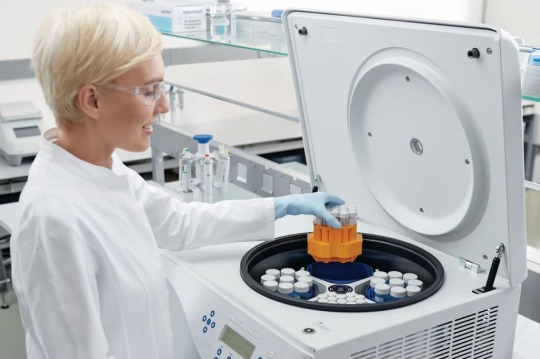
Centrifuges harness centrifugal force to separate components within a liquid sample based on their density. Commonly used for separating blood components in medical laboratories, centrifuges find applications in various scientific disciplines, including biochemistry and molecular biology. Different types of centrifuges, such as ultracentrifuges and microcentrifuges, cater to specific needs of researchers.
Incubators: Nurturing Growth in a Controlled Environment
Incubators recreate specific environmental conditions to foster the growth of cultures, cells, or microorganisms. They provide a controlled setting for experiments requiring constant temperature, humidity, and CO2 levels. Incubators play a crucial role in biological and medical research, ensuring optimal conditions for cell cultures and experiments.
Autoclaves: Sterilizing for Safety
Sterilization is a non-negotiable aspect of laboratory work, particularly in microbiology and medical research. Autoclaves, using high-pressure steam, eliminate bacteria, viruses, and other contaminants from laboratory equipment and materials. This ensures a sterile environment for experiments and prevents cross-contamination.
Spectrophotometers: Quantifying the Spectrum

Spectrophotometers measure the intensity of light absorbed or transmitted by a sample at different wavelengths. Widely used in chemistry and biochemistry, these instruments provide valuable data about the composition and concentration of substances. Spectrophotometers play a pivotal role in quantifying DNA, proteins, and various chemical compounds.
Ovens and Furnaces: Heat for Transformation
For experiments requiring precise temperature control and heat application, ovens and furnaces step in. These apparatus are crucial for processes like drying, sterilization, and material synthesis. Furnaces, capable of reaching higher temperatures, find applications in metallurgy, ceramics, and material science.
PH Meters: Gauging Acidity and Alkalinity
The acidity or alkalinity of a solution is a fundamental parameter in many scientific investigations. pH meters provide an accurate measure of the hydrogen ion concentration in a solution, allowing researchers to monitor and control the acidity or alkalinity of their experimental environments. These instruments are indispensable in fields like chemistry, biology, and environmental science.
Chromatography Systems: Separating Mixtures with Precision

Chromatography is a versatile technique employed to separate and analyze complex mixtures. Gas chromatography, liquid chromatography, and thin-layer chromatography are among the various chromatography systems used in laboratories. These systems are vital for applications ranging from pharmaceutical analysis to environmental monitoring.
In Conclusion of type of laboratory apparatus :
The laboratory apparatus discussed here represents the diverse tools that scientists and researchers wield in their quest for knowledge and discovery. Each instrument plays a specific role, contributing to the intricate tapestry of scientific exploration. As technology continues to advance, new and innovative laboratory apparatus will undoubtedly emerge, further enriching the capabilities of laboratories worldwide. In the grand symphony of scientific inquiry, these apparatus stand as the instruments that harmonize to unveil the secrets of the natural world.
0 notes
Text
Horiba Yumizen H550 Hematology Analyzer

In the ever-evolving landscape of medical diagnostics, the Horiba Yumizen H550 stands out as a game-changer, particularly for smaller laboratories seeking advanced hematology analysis capabilities. This innovative instrument not only streamlines processes but also enhances precision, efficiency, and overall laboratory performance.
The Need for Advanced Hematology Analysis

Smaller laboratories often face unique challenges when it comes to offering comprehensive hematology analysis. Limited resources, space constraints, and the need for quick turnaround times make it essential for these labs to invest in cutting-edge technology that not only meets their requirements but also elevates their diagnostic capabilities.
Introducing Horiba Yumizen H550
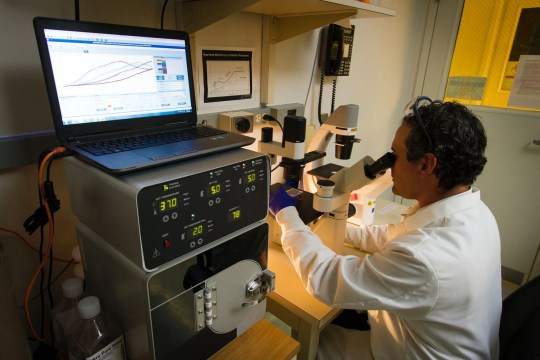
The Horiba Yumizen H550 is a compact yet powerful hematology analyzer designed with the specific needs of smaller laboratories in mind. This state-of-the-art instrument combines advanced technology with user-friendly features, making it an ideal solution for laboratories seeking efficiency without compromising on accuracy.
Key Features and Benefits
Compact Design
The space-saving design of the Horiba Yumizen H550 is a boon for smaller laboratories where every square inch matters. Despite its compact footprint, this analyzer doesn’t compromise on performance, delivering results that rival larger, more cumbersome counterparts.
Ease of Use
User-friendly interfaces are crucial in a laboratory setting, and the H550 excels in this aspect. With intuitive navigation and a straightforward operation panel, laboratory technicians can quickly adapt to and maximize the potential of this advanced hematology analyzer.
Comprehensive Parameters
The H550 offers a broad spectrum of parameters, providing a comprehensive analysis of blood samples. From complete blood counts (CBC) to advanced differentials, the instrument ensures that laboratories can meet the diverse diagnostic needs of their patients.
High Throughput
Despite its compact size, the H550 boasts impressive throughput capabilities. Laboratories can process a significant number of samples in a short time, contributing to faster turnaround times for patient results.
Advanced Technology
Utilizing cutting-edge technology, the H550 ensures accurate and reliable results. Its optical and impedance measuring methods enhance the precision of cell analysis, making it a trusted tool for diagnosing various hematological conditions.
Quality Control and Connectivity
The H550 incorporates robust quality control features, allowing laboratories to maintain the highest standards in diagnostic accuracy. Additionally, its connectivity options facilitate seamless integration with laboratory information systems (LIS) and streamline data management.
The Impact on Laboratory Efficiency
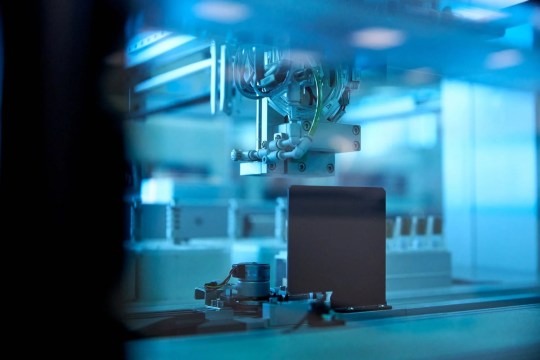
Implementing the Horiba Yumizen H550 translates into a significant boost in laboratory efficiency for smaller facilities. With reduced manual intervention, rapid result generation, and the ability to handle a diverse range of samples, laboratories can optimize their workflow and focus on delivering timely and accurate diagnoses to healthcare providers and patients.
Enhancing Patient Care

The ripple effect of incorporating the Horiba Yumizen H550 extends to improved patient care. Swift and precise hematology analysis is paramount in the diagnosis and monitoring of various medical conditions, and this advanced analyzer ensures that smaller laboratories can provide high-quality diagnostic services, contributing to better patient outcomes.
Future-Ready Technology

As the healthcare landscape continues to evolve, investing in future-ready technology is crucial. The Horiba Yumizen H550 not only meets current diagnostic demands but also positions smaller laboratories for the future. Its upgradability and adaptability to emerging technologies make it a sound investment for laboratories looking to stay at the forefront of diagnostic innovation.
Conclusion
In the realm of hematology analysis, the Horiba Yumizen H550 emerges as a beacon of efficiency and precision, especially for smaller laboratories with unique operational challenges. Its compact design, advanced technology, and user-friendly features make it an indispensable tool, enabling laboratories to elevate their diagnostic capabilities and deliver optimal patient care. As the healthcare industry continues to advance, the Horiba Yumizen H550 stands as a testament to the power of innovation in transforming laboratory operations and enhancing the overall healthcare experience for patients around the world.
0 notes
Text
Kerala Nipah Virus Outbreak In India 2023

In the last few years, the Nipah virus has affected Kerala in the south-west of India, creating concerns about why it has a stronger impact in this area. This study looks into the unique reasons that make Kerala more vulnerable to the Nipah virus, considering a mix of environmental, ecological, and socio-economic factors.
Reasons that impacting kerala nipah virus
Ecological Landscape and Biodiversity

Kerala has lots of different plants and animals, and this makes it a good place for diseases that can pass between animals and people, like Nipah. Fruit bats, which carry the virus, live happily in the state’s big fruit gardens and thick forests. This special environment makes it easy for the virus to go from bats to humans.
Source: Journal of Infectious Diseases, Wildlife Conservation Reports
Agricultural Practices and Human-Bat Interaction

Kerala’s agrarian landscape, dominated by fruit cultivation and farming, brings humans into close contact with bats and their habitats. Traditional farming practices, coupled with the consumption of raw date palm sap, provide a direct route for the transmission of the Nipah virus from bats to humans.
Source: Kerala Agricultural University, Journal of Agriculture and Rural Development
Population Density and Urbanization

The high population density and rapid urbanization in Kerala contribute to the swift spread of infectious diseases. Crowded urban centers become hotspots for virus transmission, posing a challenge for timely containment measures. Kerala’s urban areas act as potential amplifiers for the Nipah virus, necessitating vigilant public health strategies.
Source: Census of India, Urban Development Reports
Healthcare Infrastructure and Preparedness

While Kerala boasts a robust healthcare system, the emergence of the Nipah virus presents unique challenges. The need for specialized facilities, rigorous containment measures, and rapid response teams is crucial in managing outbreaks. Continuous training and preparedness initiatives are essential to mitigate the impact of the virus on public health.
Source: Kerala Health Department, World Health Organization (WHO) Guidelines
Social and Cultural Practices

Kerala’s close-knit communities and cultural practices, such as communal living and large gatherings, contribute to the rapid spread of contagious diseases. Understanding and integrating cultural sensitivities into public health interventions are pivotal in fostering community cooperation and compliance with preventive measures.
Source: Cultural Anthropology Studies, Health Communication Research
Climate and Seasonal Patterns

The tropical climate of Kerala, characterized by high temperatures and humidity, creates favorable conditions for the survival of the Nipah virus. Understanding the seasonal patterns of the virus can aid in predicting and managing outbreaks effectively.
Source: Indian Meteorological Department, Environmental Health Perspectives.
In conclusion, the multifaceted nature of the Nipah virus impact in Kerala is deeply rooted in the state’s ecological, socio-economic, and cultural fabric. Addressing this public health challenge requires a comprehensive approach that combines scientific research, community engagement, and strategic policy measures. As Kerala grapples with the recurrent threat of the Nipah virus, collaborative efforts on local, national, and international levels are imperative to safeguard public health and prevent future outbreaks.
0 notes
Text
Pathology Laboratory Equipment Care and Maintenance
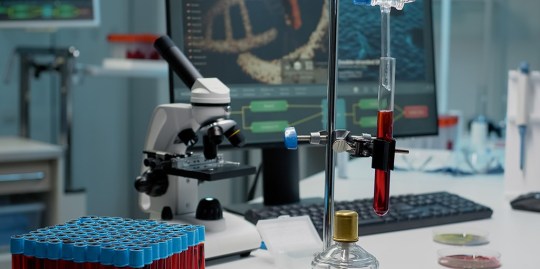
Pathology Laboratory Equipment Care and Maintenance. Within the complex tapestry of Healthcare, pathology labs stand as vital players, playing a crucial role in disease diagnosis and treatment. The accuracy of diagnostic results heavily relies on advanced medical equipment, making rigorous maintenance, as per standards like ISO 15189 and the National Accreditation Board for Testing and Calibration Laboratories (NABL), imperative. This article delves into the crucial significance of regular maintenance for medical equipment in pathology labs, emphasizing its role in ensuring patient safety. Additionally, it explores the essentials of equipment maintenance to further underscore its impact.
Adherence to ISO 15189 and NABL Standards
In the context of pathology labs, adherence to ISO 15189 and NABL standards is not just a recommendation; it is a prerequisite. These standards emphasize the importance of regular maintenance, incorporating preventive measures such as calibration, performance checks, and the documentation of maintenance activities. This meticulous adherence ensures that pathology labs not only meet international quality benchmarks but also establishes a foundation for patient safety.

Reliability for Accurate Diagnoses
Preventive maintenance is the linchpin in maintaining the reliability of medical equipment. In the context of healthcare, where accurate diagnoses are paramount, implementing preventive measures becomes non-negotiable. Aligning with ISO 15189 and NABL guidelines ensures that instruments consistently produce precise results, instilling confidence in healthcare professionals and ensuring accurate treatment plans for patients.
Financial Sustainability through Equipment Longevity

Preventive maintenance significantly extends the lifespan of expensive medical equipment. Regular check-ups, timely component replacements, and systematic inspections ensure that potential issues are identified and addressed before they escalate. This not only mitigates the risk of unexpected breakdowns but also contributes to the financial sustainability of pathology labs by reducing the need for emergency repairs or premature replacements.
Structured Maintenance Schedules
Maintenance schedules provide a systematic approach to equipment care. These schedules ensure that all aspects of maintenance, from routine checks to major overhauls, are conducted at predetermined intervals. Structured schedules prevent oversight, guaranteeing that no crucial aspect of equipment upkeep is neglected. In the Indian context, where efficiency is vital, adherence to schedules minimizes downtime and maximizes the productivity of pathology labs.
Essentials of Equipment Maintenance

Regular Inspections: Routine visual inspections and checks for signs of wear or damage are essential to catch potential issues early on.
Calibration: Regular calibration of instruments, as per manufacturer guidelines and standards, ensures the accuracy of measurements and test results.
Cleaning and Sanitization: Proper cleaning and sanitization protocols prevent contamination, safeguarding both equipment functionality and patient safety.
Documentation: Comprehensive documentation of all maintenance activities, as mandated by ISO 15189 and NABL, is crucial for compliance and accountability.
Training: Regular training of laboratory staff on proper usage and basic maintenance tasks contributes to the overall effectiveness of equipment care.
Enhanced Patient Safety and Timely Care

Preventive maintenance, coupled with structured schedules and adherence to essential practices, serves as the bedrock of patient safety in pathology labs. The systematic identification and resolution of potential issues ensure that errors are minimized, safeguarding patient health. Adherence to ISO 15189 and NABL standards not only enhances patient safety but also contributes to the timely delivery of care by preventing delays caused by equipment malfunctions.
In the pathology landscape, where precision, reliability, and efficiency are imperative, the impact of regular maintenance cannot be overstated. Adherence to ISO 15189 and NABL standards, coupled with a focus on preventive maintenance, structured schedules, and the essentials of equipment care, ensures that pathology labs operate at the pinnacle of their capabilities. This commitment not only upholds international quality parameters but also fosters a culture of patient safety and trust, ultimately improving healthcare outcomes.
0 notes
Text
Chemistry Lab Equipment That Trends In 2024
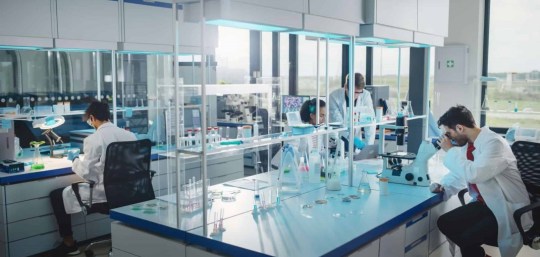
Chemistry lab equipment is a comprehensive range of high-quality equipment to elevate your scientific experiments and research The year 2024 promises to deliver interesting innovations in chemistry lab supplies, with an emphasis on efficiency, accuracy, and sustainability. In this blog article, we will look at the main trends that will impact the chemistry lab supplies sector in 2023. Let’s take a look at the future of chemistry lab supplies, from cutting-edge instruments to eco-friendly solutions.
Different Types of Chemistry Lab Equipment
Sustainable Lab Practices
Environmental consciousness is seeping into every aspect of our lives, and laboratories are no exception. The demand for eco-friendly lab supplies, from biodegradable disposables to energy-efficient equipment, is on the rise. Researchers are focusing on minimizing their environmental footprint without compromising the quality of their work.
Automation and Robotics
Advancements in automation and robotics are transforming the efficiency and accuracy of lab processes. Automated systems for sample handling, high-throughput screening, and data analysis are streamlining workflows, reducing human error, and significantly increasing the pace of research.
Digital Lab Notebooks

The traditional paper lab notebook is making way for its digital counterpart. Digital lab notebooks is another chemistry lab equipment which provide a centralized, searchable platform for recording and managing experimental data. They enhance collaboration, facilitate version control, and offer a more secure and organized approach to data management.
Nanotechnology in Materials
The application of nanotechnology in materials science is opening new frontiers. Another chemistry lab equipment is Nanomaterials exhibit unique properties that can be harnessed for various applications, from drug delivery systems to catalysis. The demand for high-quality nanomaterials and precise characterization tools is on the ascent.
Advanced Spectroscopy Techniques
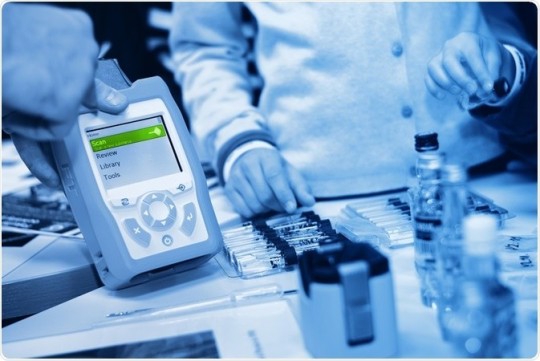
A key component of analytical chemistry is spectroscopy, and in recent years, there has been a boom in the development of sophisticated spectroscopic methods. These methods provide hitherto unheard-of insights into the compositions and structures of molecules, from mass spectrometry to Fourier-transform infrared (FTIR).
Augmented Reality (AR) and Virtual Reality (VR)
AR and VR are making inroads into laboratory settings, offering immersive experiences for training and simulations. These technologies facilitate virtual experiments, providing a risk-free environment for learning and skill development.
Customized Lab Furniture and Layouts
Laboratory design is becoming increasingly tailored to the specific needs of research projects. Customized lab furniture and layouts enhance workflow efficiency, accommodate specialized equipment, and create ergonomic workspaces.
Integration of Artificial Intelligence (AI)

Data interpretation and analysis are being revolutionized by the incorporation of AI. Large datasets may be processed by AI algorithms, which can also spot trends and even recommend possible directions for more research. This improves the accuracy and speed of study findings.
Conclusion
With substantial improvements in automation, digitalization, sustainability, analytical methods, and personal protective chemistry lab equipment, the year 2024 holds enormous potential for the area of chemistry lab supplies. These developments will transform the way research is performed, increasing efficiency, accuracy, and safety in laboratory settings. As scientists try to expand their knowledge, the incorporation of cutting-edge technology and sustainable practices will be critical in accelerating scientific discovery and creating a greener and more efficient future. Chemists can open new possibilities and make significant advances in their research by adopting these developments.
0 notes
Text
Top 5 Healthcare Automation Trends in 2024
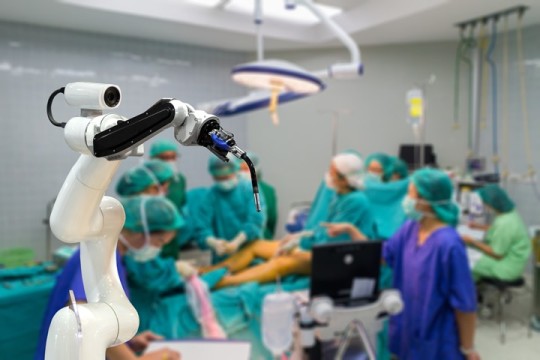
Healthcare automation trends, In the ever-evolving landscape of healthcare, the marriage of nursing and technology is paving the way for a transformative era. This blog explores five cutting-edge healthcare automation trends technologies, unraveling their multifaceted impacts and presenting a promising vision for the future of healthcare delivery.
Modern technology in healthcare automation trends is revolutionizing lives across various domains, and its impact on the healthcare sector is more profound than ever. A recent study revealed that about 82% of professional nurses believe that advancements in technology and equipment innovation enable them to provide better patient care. Let’s delve into the technologies that these nurses are talking about.
Significance of Upcoming Healthcare Automation Trends
In the realm of healthcare, the integration of Robotic Process Automation (RPA) or Healthcare automation Trends not only lightens the burden on staff but also introduces IT-driven automation to enhance patient outcomes. The surge in RPA adoption within healthcare can be attributed to several pivotal factors:
Data Interoperability: Facilitating seamless data exchange between various healthcare systems has become a driving force behind the increased incorporation of RPA.
Rapidly Changing Business Models: The dynamic nature of healthcare business models necessitates adaptable solutions, making RPA an attractive choice for organizations aiming to keep pace with rapid changes.
Preference for Easy Access to Healthcare Facilities: Meeting the growing demand for convenient access to healthcare services has fueled the adoption of RPA, aligning with the evolving preferences of patients.
Rising Healthcare Operational Costs: The escalating operational expenses in healthcare have spurred the exploration of RPA as a cost-effective solution to streamline processes and improve overall efficiency.
In the face of these intricate challenges and competing priorities, the question arises: Where should organizations concentrate their efforts to enhance the healthcare experience? The answer lies in vigilant observation of emerging trends. As the healthcare sector continues its expansion, novel trends surface, providing glimpses into the future. Seizing the opportunities presented by these technological advancements before competitors do is paramount to achieving widespread automation.
Telehealth and Remote Patient Monitoring : Bridging Gaps in Healthcare
Telehealth stands as a symbol of accessibility, breaking down geographical barriers to care. Nurses are now navigating a digital landscape, connecting with patients through virtual platforms, conducting consultations, and remotely monitoring vital signs. The integration of wearables and smart sensors empowers nurses with real-time patient data, allowing for early interventions and personalized care plans.
Benefits:
Accessibility: Overcomes geographical constraints, bringing healthcare to remote areas.
Timely Interventions: Enables quick response to changes in patient health.
Patient Empowerment: Encourages patients to actively engage in their healthcare.

Electronic Health Records (EHRs): The Digital Backbone of Nursing
Say goodbye to paper trails, EHRs have ushered in an era of streamlined information management. Nurses can access centralized platforms containing comprehensive patient data, from medical histories to test results. The efficiency of EHRs empowers nurses to make informed decisions at the point of care, fostering a holistic approach to patient well-being.
Benefits:
Efficiency: Quick retrieval of patient information enhances decision-making.
Coordination: Facilitates seamless collaboration among healthcare professionals.
Data Accuracy: Reduces the risk of errors associated with manual record-keeping.

Robotics and Automation: Allies in Nursing Efficiency
Welcome to the era of robotic collaboration. Robots, equipped for routine tasks like medication delivery, alleviate the burden on nurses, allowing them to redirect focus towards intricate aspects of patient care. Robotic exoskeletons have emerged as aids in patient mobility, reducing physical strain on nurses and enhancing rehabilitation efforts.
Benefits:
Task Efficiency: Robots handle routine tasks, enabling nurses to focus on critical aspects.
Patient Mobility: Robotic exoskeletons contribute to enhanced rehabilitation outcomes.
Resource Optimization: Efficient task management leads to optimal use of nursing resources.
Artificial Intelligence (AI) in Diagnostics: Precision Redefined
AI algorithms are the new pioneers in diagnostic accuracy. Nurses leverage these algorithms to analyze medical images, detecting patterns that might elude the human eye. The result? Quicker, more accurate diagnoses, propelling healthcare into an era of precision medicine.
Benefits:
Accuracy: AI enhances the precision of medical evaluations.
Time Efficiency: Expedited diagnostic processes lead to faster treatment initiation.
Data-Driven Insights: AI provides valuable insights for tailored patient care.
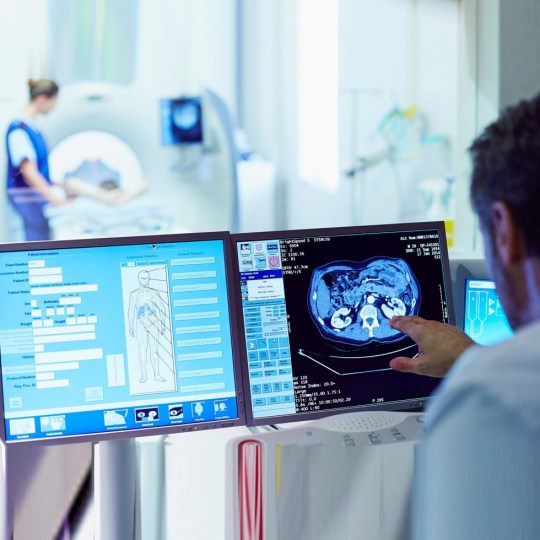
Augmented Reality (AR) for Training and Procedures: Bridging Theory and Practice
The classroom transcends physical boundaries with the infusion of augmented reality into nursing education. AR applications provide a simulated environment for nurses to practice intricate medical procedures, enhancing their skills in a risk-free space.
Benefits:
Immersive Learning: AR brings hands-on experience to nursing education.
Skill Enhancement: Nurses can practice complex procedures in a safe virtual setting.
Adaptability: AR training prepares nurses for diverse clinical scenarios.
In essence, these technological marvels are not mere tools, they are the architects of a future where compassionate nursing intertwines seamlessly with the precision of cutting-edge technology. As nurses embrace these innovations, the healthcare industry strides into a realm where patient care is not just a duty but a harmonious symphony of skill and technology.
Contemporary healthcare automation trends technology is not just revolutionary, it’s exhilarating. New ideas continue to emerge, impacting the industry every day. Nurses, expected to stay updated on the newest technological advancements, may find it challenging. Therefore, medical facilities must schedule regular training sessions to ensure that their nurses are proficient in using cutting-edge technologies.
1 note
·
View note